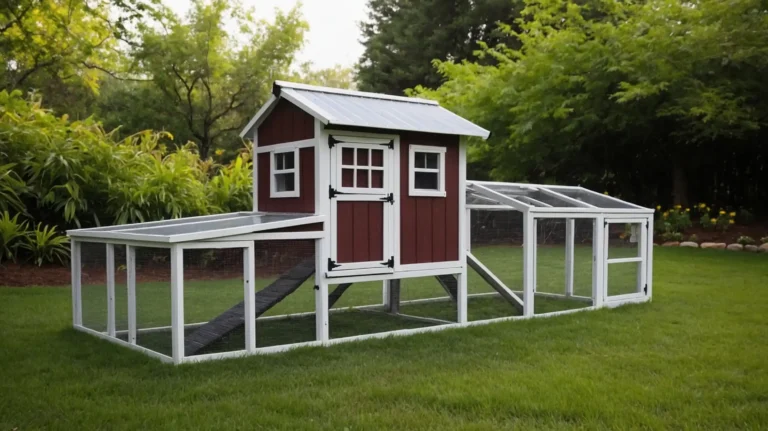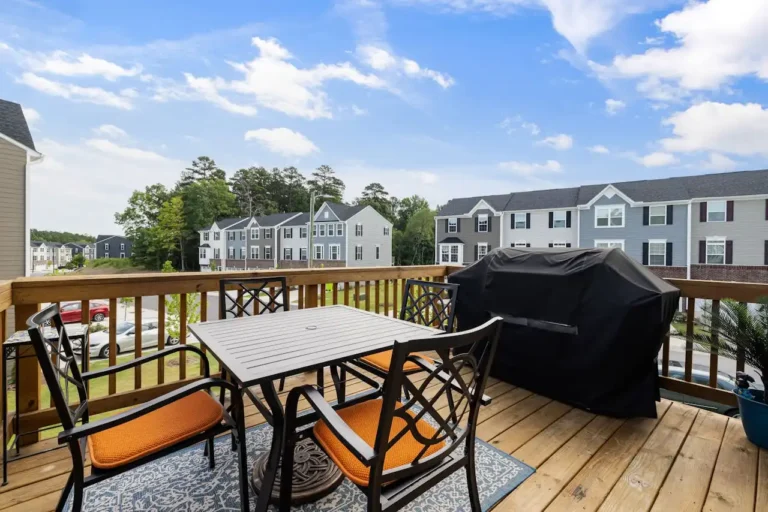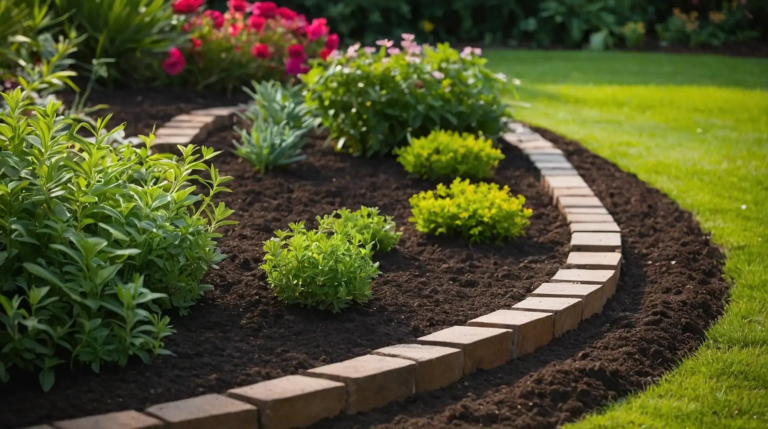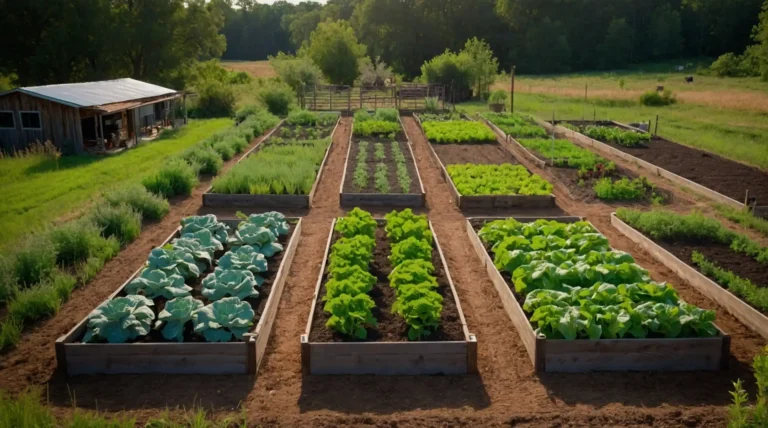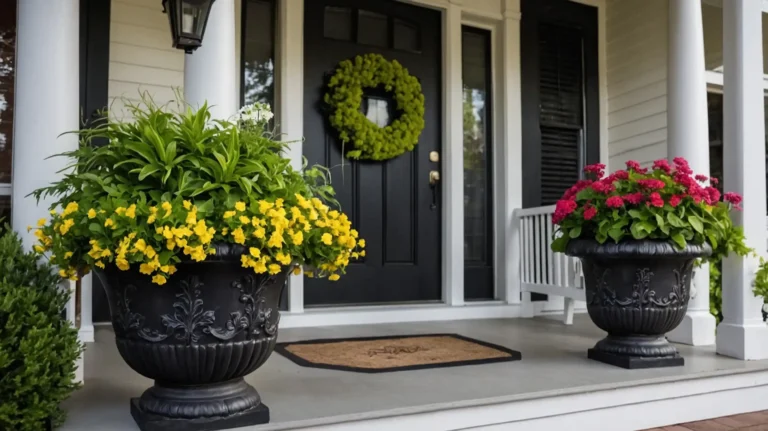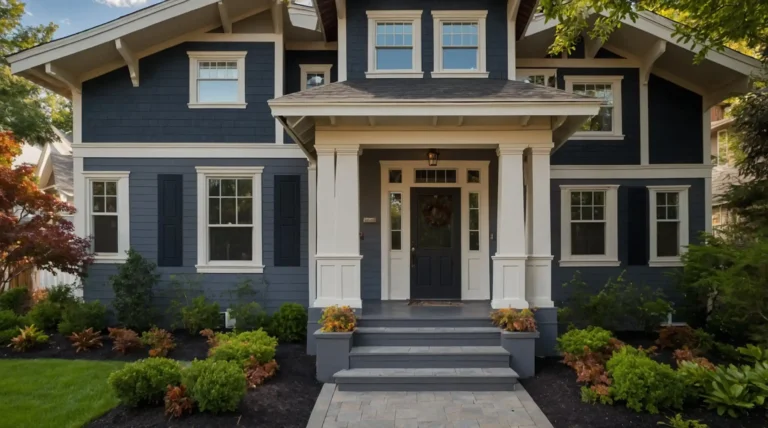17 Stunning Shade Garden Design Layouts to Transform Your Shadowy Spaces
Shade gardens offer a peaceful retreat from summer heat and a unique opportunity to showcase plants that thrive with less direct sunlight.
Rather than viewing shady areas as problematic, embrace them as canvases for lush, textured landscapes.
With thoughtful design, these cooler spaces can become your garden’s most inviting feature.
Shade gardens typically require less watering and maintenance once established, creating a low-stress gardening experience.
Ready to transform that dim corner into a verdant oasis? These 17 design layouts will help you turn challenging shade conditions into your garden’s most captivating feature.
1: Create a Woodland Path Garden
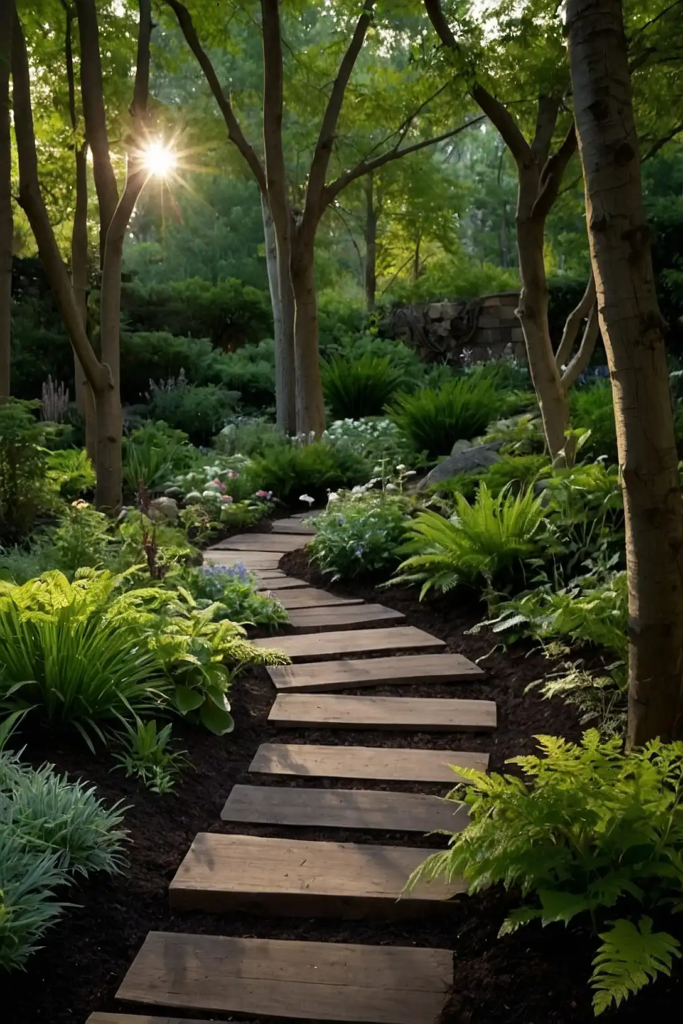
Design a meandering path through your shaded area using mulch, gravel, or stepping stones.
Line the pathway with ferns, hostas, and shade-loving woodland flowers to mimic a forest floor.
Add fallen logs or large stones as natural-looking borders and habitat for beneficial insects.
This creates a journey through your shade garden rather than just a static display.
Consider varying path width to create rhythm and points of interest along the way.
2: Design a Shade-Loving Container Garden
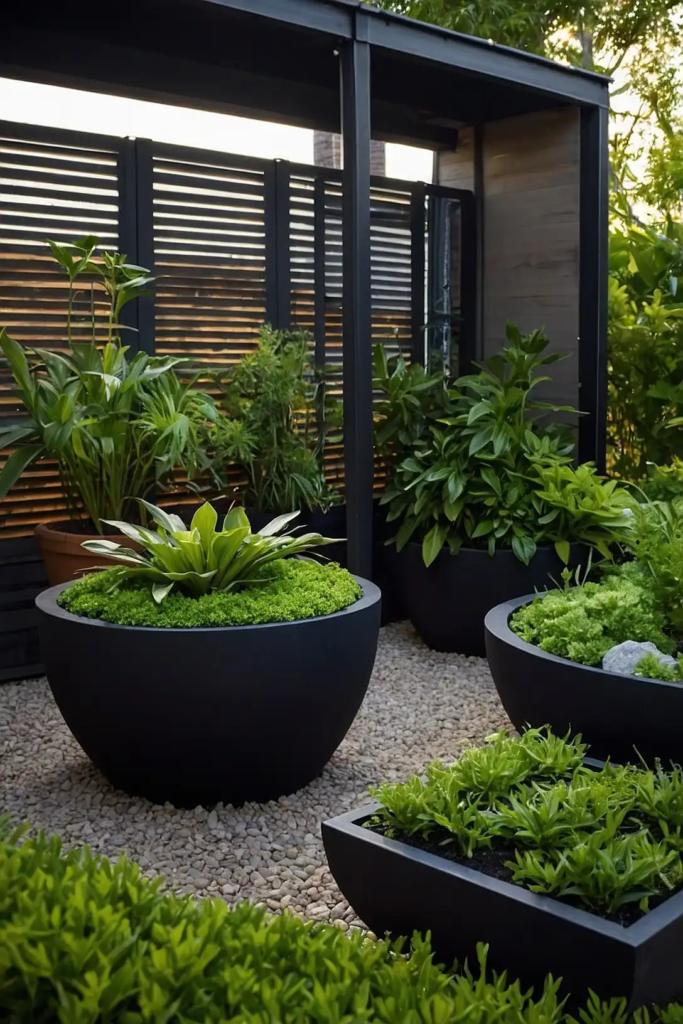
Group containers of different heights and sizes filled with shade-tolerant plants like coleus, begonias, and caladiums.
This approach works particularly well on shaded patios or under tree canopies.
Use lightweight containers that you can easily move to find the perfect light conditions.
Choose pots with good drainage to prevent water logging in these already moist environments.
Incorporate trailing plants like ivy or creeping Jenny to soften edges and create vertical interest.
3: Plant a Layered Shade Border
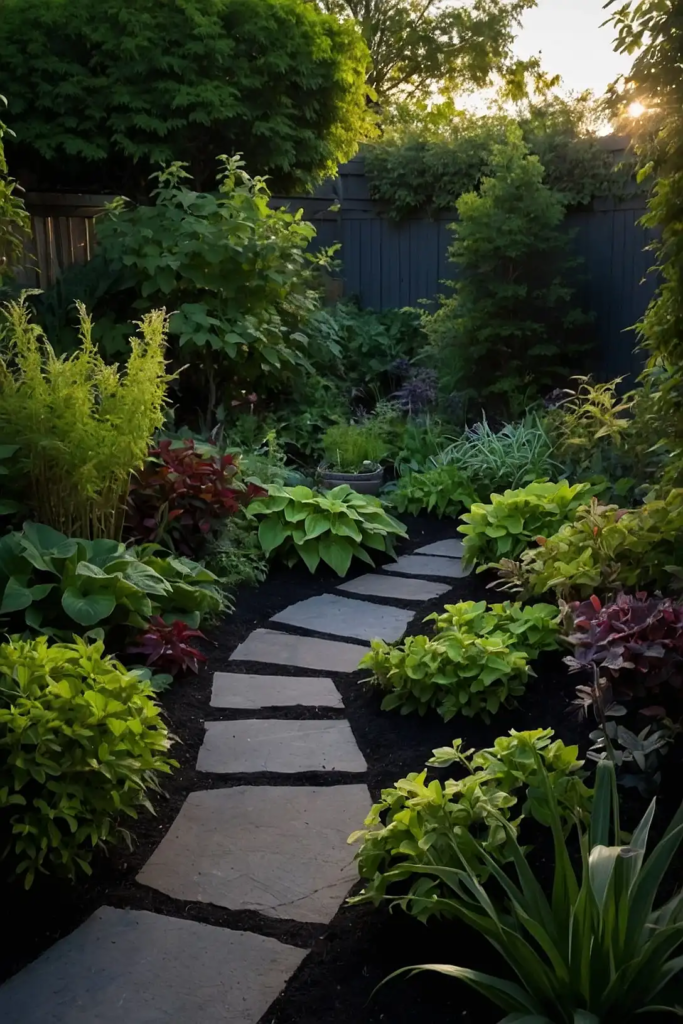
Create visual interest by designing a border with distinct height layers – tall shrubs at the back, mid-height perennials in the middle, and ground covers at the front.
This mimics natural forest edges.
Select plants with contrasting foliage shapes and textures for year-round appeal.
Include early spring bloomers like hellebores that capture sunlight before trees leaf out.
Incorporate shade-loving ornamental grasses for movement and structural interest, even in low-light conditions.
4: Develop a Meditation Shade Garden
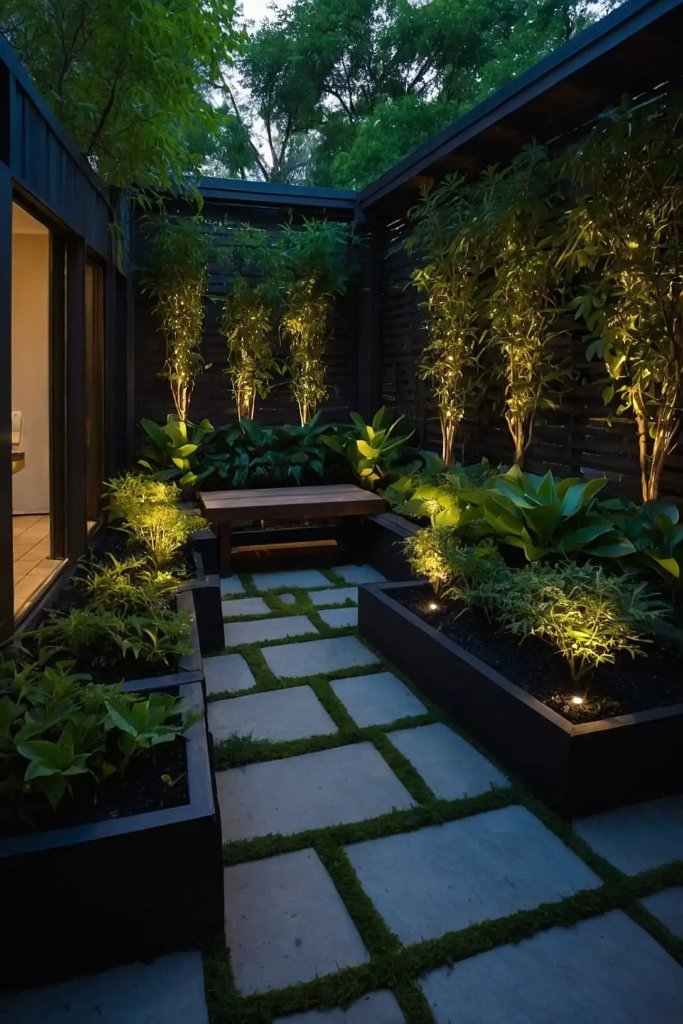
Design a secluded space with a comfortable seating area surrounded by calming shade plants with subtle colors and textures.
Focus on plants with gentle movement and peaceful qualities.
Add a small water feature – even a simple basin – to introduce the soothing sound of water.
Position Japanese forest grass or ferns nearby to respond to the slightest breeze.
Use a limited color palette of whites, blues, and soft purples to enhance the tranquil atmosphere of this restful retreat.
5: Create a Moss Garden Feature
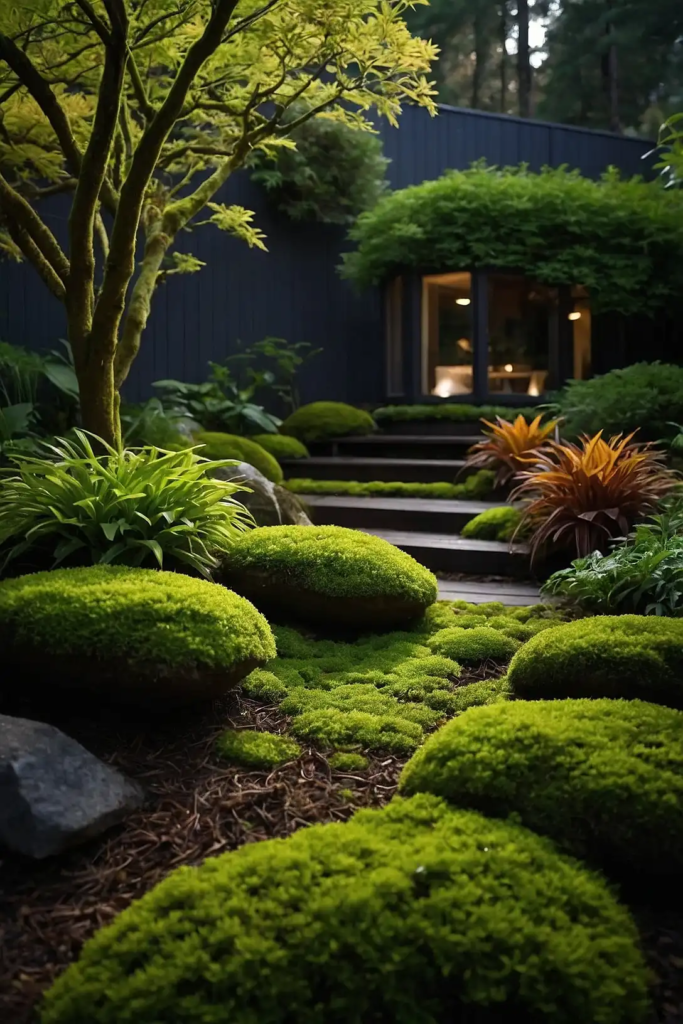
Establish a lush moss garden in deep shade areas where grass won’t grow. Different moss varieties offer varying textures and shades of green for visual interest.
Incorporate smooth stones, small water features, or Japanese-inspired elements for a serene, contemplative space.
Keep the design minimalist to highlight the beauty of the mosses.
Mist regularly during establishment and dry periods, as mosses thrive in consistently damp environments.
6: Design a Shade-Loving Rain Garden
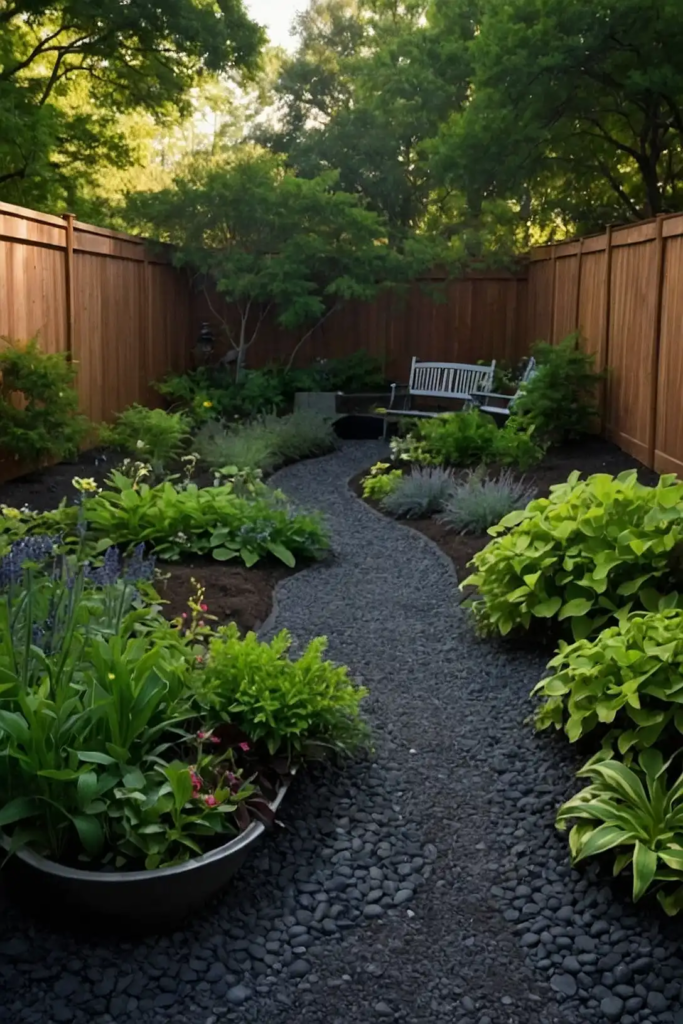
Channel water runoff into a depression planted with shade-tolerant moisture-lovers like astilbe, turtlehead, and cardinal flower.
This practical design manages water while creating a lush display.
Shape the basin to create a natural-looking depression rather than an obvious drainage feature.
Edge with decorative stones to prevent soil erosion during heavy downpours.
Position taller plants at the center or back of the rain garden, with shorter species along the periphery for a balanced composition.
7: Create a Dramatic Foliage Garden
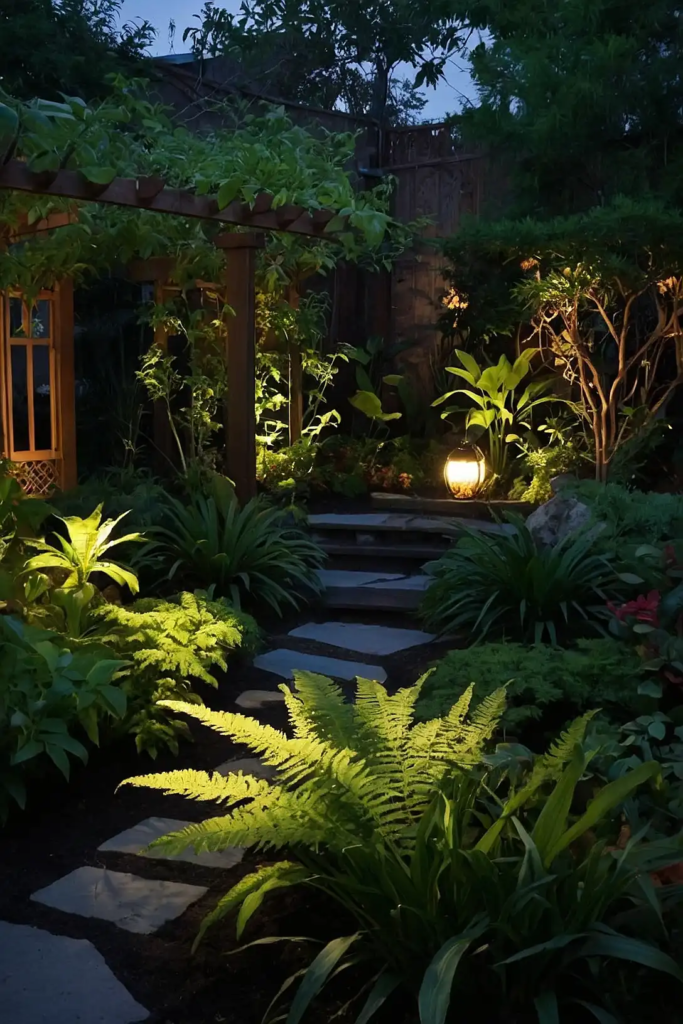
Focus on plants with extraordinary leaf colors, patterns, and textures rather than flowers.
Combine bold hostas, painted ferns, heucheras, and Japanese painted ferns for a tapestry effect.
Arrange plants to create contrasting combinations – pair large, bold leaves with delicate, lacy textures.
Add white or silver-variegated plants to brighten dark corners.
Consider how seasonal changes will affect your display, incorporating plants with autumn color or winter interest.
8: Design a Shade-Friendly Children’s Garden
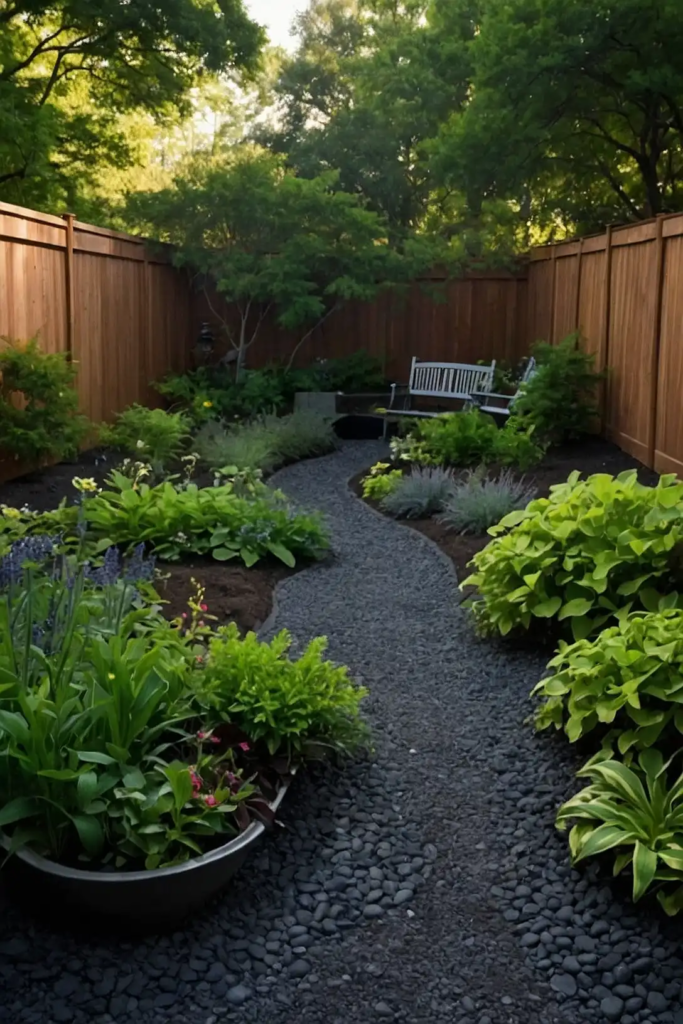
Create a magical space with child-friendly shade plants like sensitive fern (which responds to touch), lamb’s ears for tactile interest, and woodland strawberries for edible treats.
Incorporate whimsical elements like fairy houses, colorful mushroom decorations, or small animal sculptures hidden among plants.
Add a small seating area sized for children.
Choose non-toxic plants exclusively and avoid those with thorns or irritating properties for a safe play environment.
9: Develop a Shade Butterfly Garden
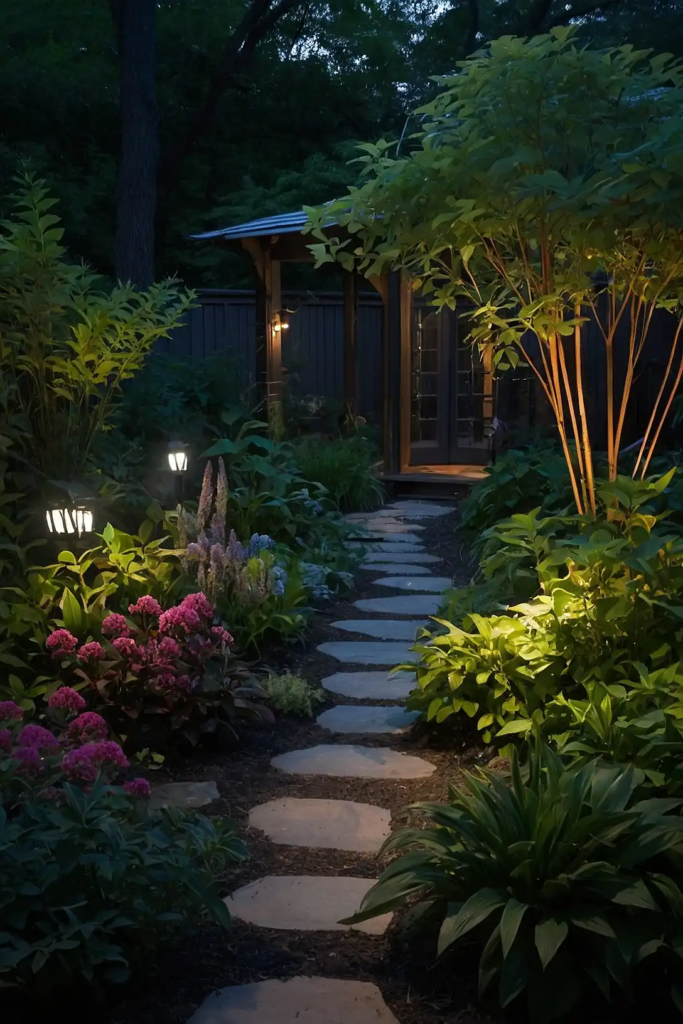
Select shade-tolerant plants that attract butterflies, such as woodland phlox, cardinal flower, and native columbine.
Position these in the brightest parts of your shade garden.
Include butterfly host plants like Virginia bluebells and woodland asters where caterpillars can feed.
Add flat stones where butterflies can bask in dappled sunlight.
Create clusters of the same plant species rather than individual specimens to make it easier for butterflies to find their preferred nectar sources.
10: Build a Shade-Friendly Rock Garden
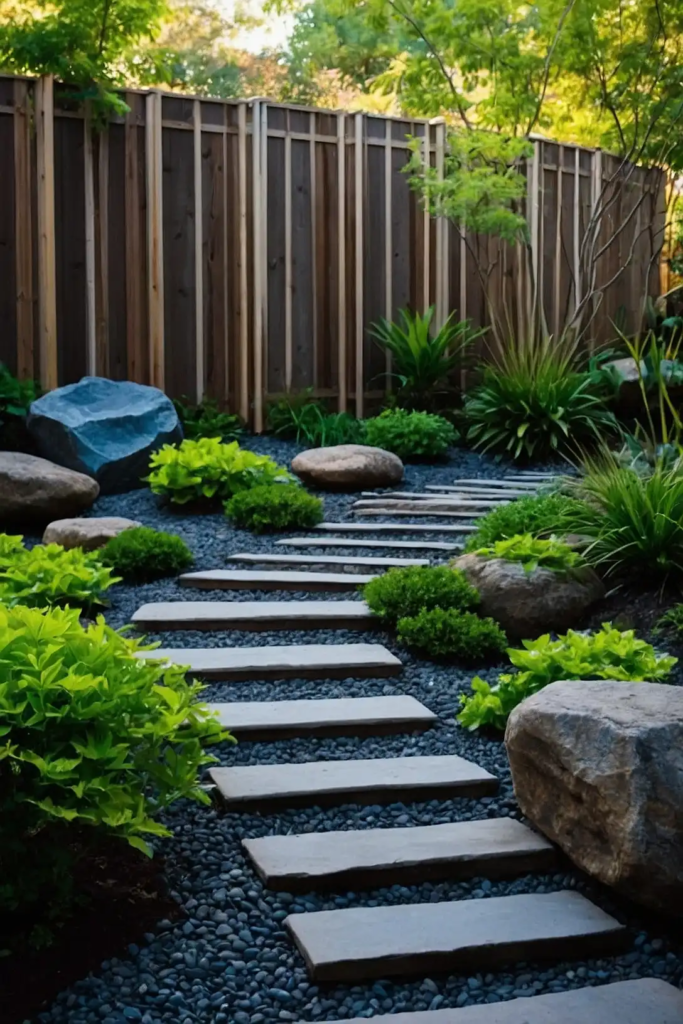
Construct a rock garden in partial shade using shade-tolerant alpine plants, miniature hostas, and small ferns tucked between stones.
This combines the appeal of rock gardens with shade tolerance.
Choose rocks with interesting shapes, colors, and textures that complement your plant selections.
Position larger stones partially buried for a natural, established appearance.
Ensure good drainage by incorporating plenty of grit into your planting mix, as many rock garden plants dislike waterlogged conditions.
11: Create a Tropical Shade Retreat
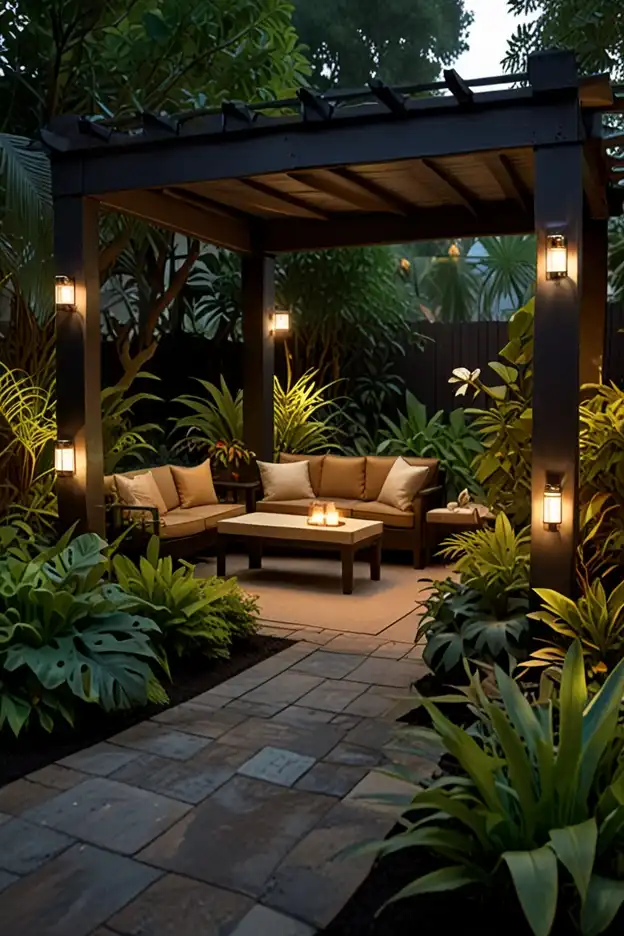
Design an exotic-looking shade garden using bold-leaved plants like elephant ears, fatsia, and large hostas.
Add ferns and shade-tolerant bamboo for authentic tropical atmosphere.
Incorporate comfortable seating and perhaps a hammock for true vacation vibes.
Use colorful containers or garden art to enhance the tropical feel.
Position this garden where you can enjoy it from indoors during inclement weather, extending its visual appeal year-round.
12: Design a Formal Shade Garden
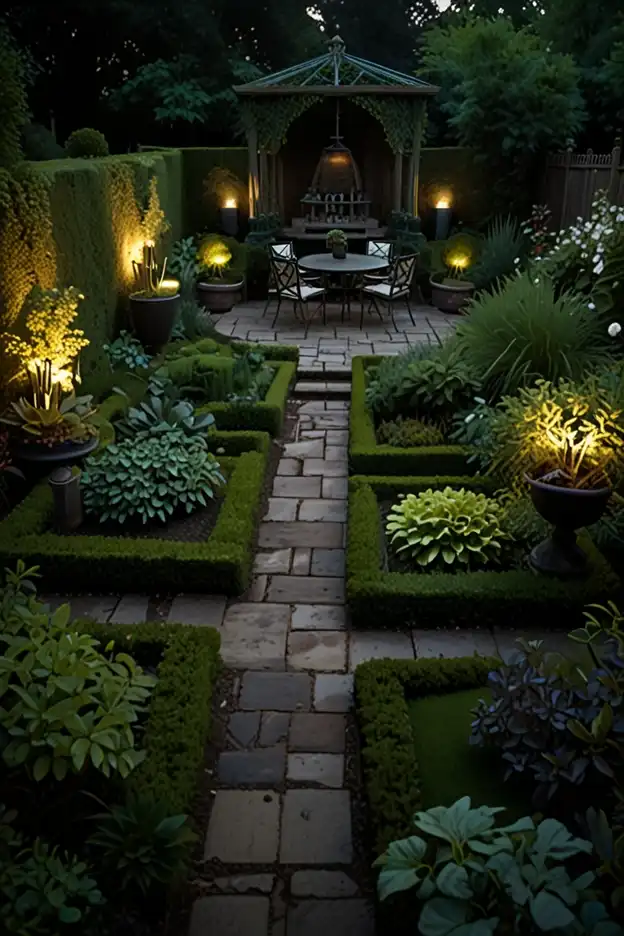
Create structure with geometric beds, defined edges, and symmetrical planting in shaded areas.
Use boxwood or yew to form neat hedges that frame more informal shade plantings.
Add classic garden elements like a sundial, birdbath, or small fountain as a central focal point.
Keep the color palette restrained with whites, silvers, and blues.
Incorporate gravel or stone paths with clear, straight lines to reinforce the formal design aesthetic.
13: Plant a Native Shade Woodland
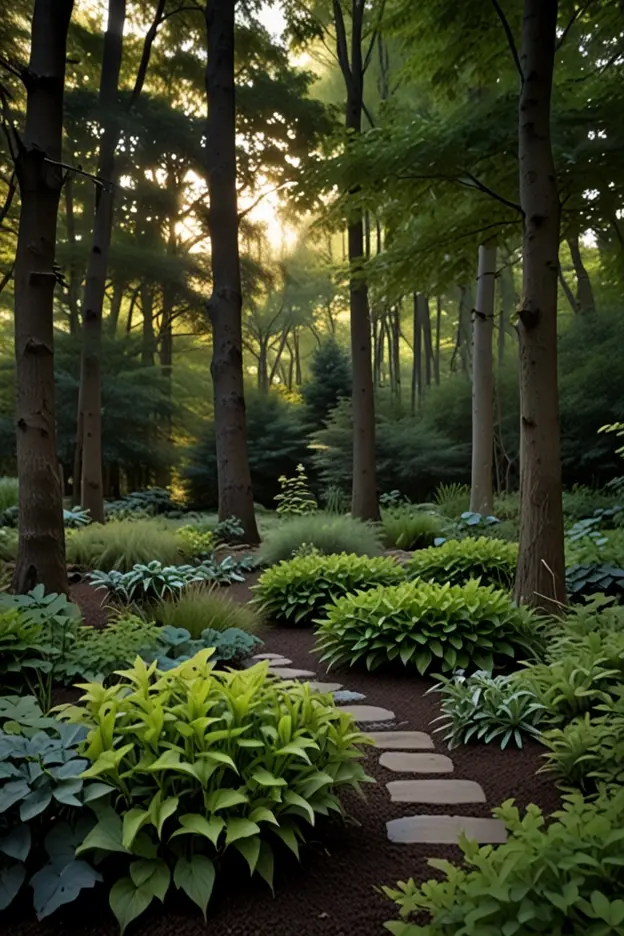
Recreate a natural woodland ecosystem using native shade plants indigenous to your region.
This approach supports local wildlife while creating a low-maintenance, cohesive design.
Research which native plants naturally grow together in woodland settings in your area.
Include spring ephemeral flowers that bloom before the tree canopy fills in.
Add log piles, leaf mulch, and bird-friendly features to complete this habitat-focused garden design.
14: Create a Four-Season Shade Garden
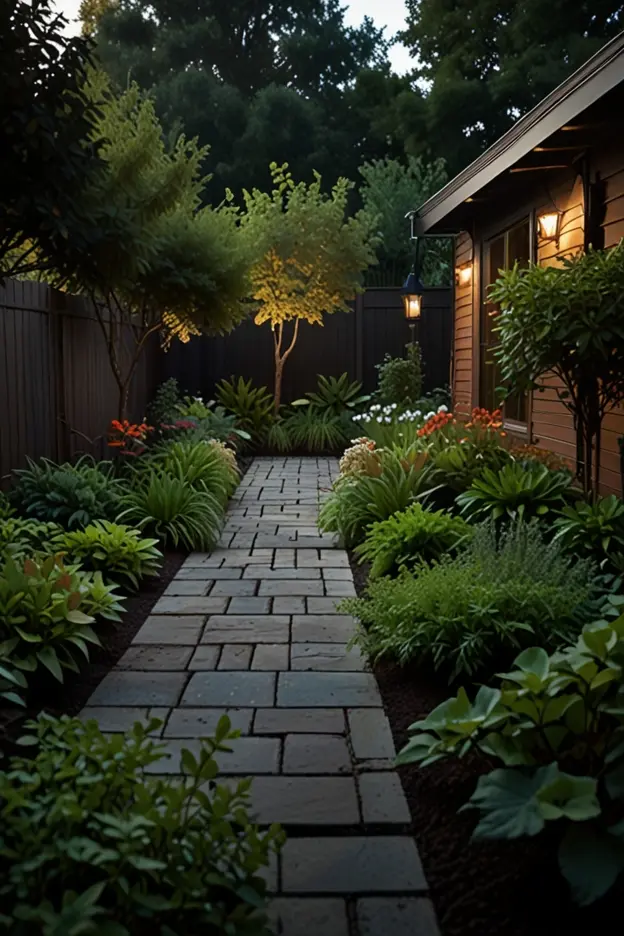
Design your shade garden to showcase different plants in each season – spring bulbs, summer perennials, fall color, and winter structure. This ensures year-round interest.
Include plants with outstanding seasonal features like witch hazel for winter blooms, Japanese maples for fall color, and hellebores for early spring flowers.
Add evergreens for consistent structure.
Document your garden through photographs to identify and fill seasonal gaps in your display.
15: Design a Shade-Friendly Edible Garden
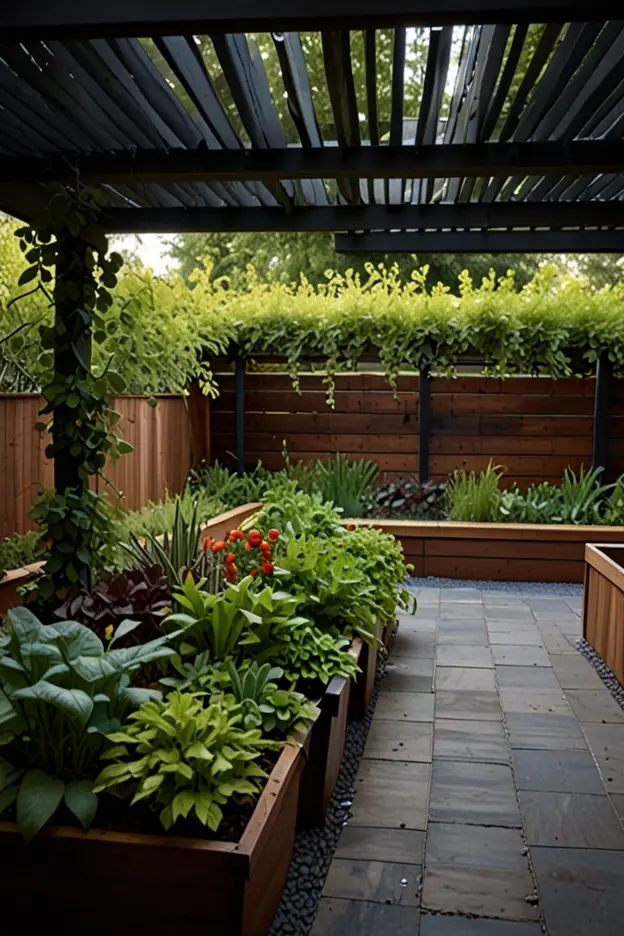
Grow shade-tolerant edibles like leafy greens, rhubarb, certain berries, and herbs such as mint and chives.
Position these to receive morning sun if possible.
Maximize light by using reflective mulches or light-colored walls to bounce available light onto plants. Grow climbing edibles vertically to access higher light levels.
Intercrop perennial edibles with ornamental shade plants for an attractive and productive garden combination.
16: Create a Zen Shade Garden
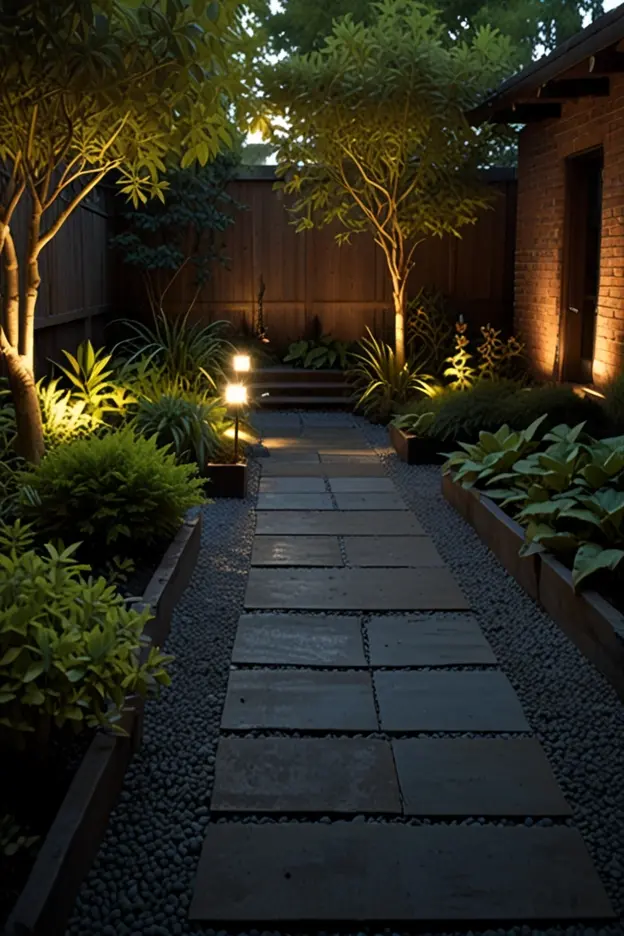
Design a minimalist space with carefully placed plants, raked gravel, and thoughtfully positioned stones.
Select shade plants with a restrained, clean appearance like certain ferns and mosses.
Limit your plant palette to create harmony and avoid visual clutter. Incorporate a simple water feature or stone basin that collects rainfall.
Add a small seating area or viewing position where you can contemplate the garden’s serene beauty.
17: Develop a Night Garden in Shade
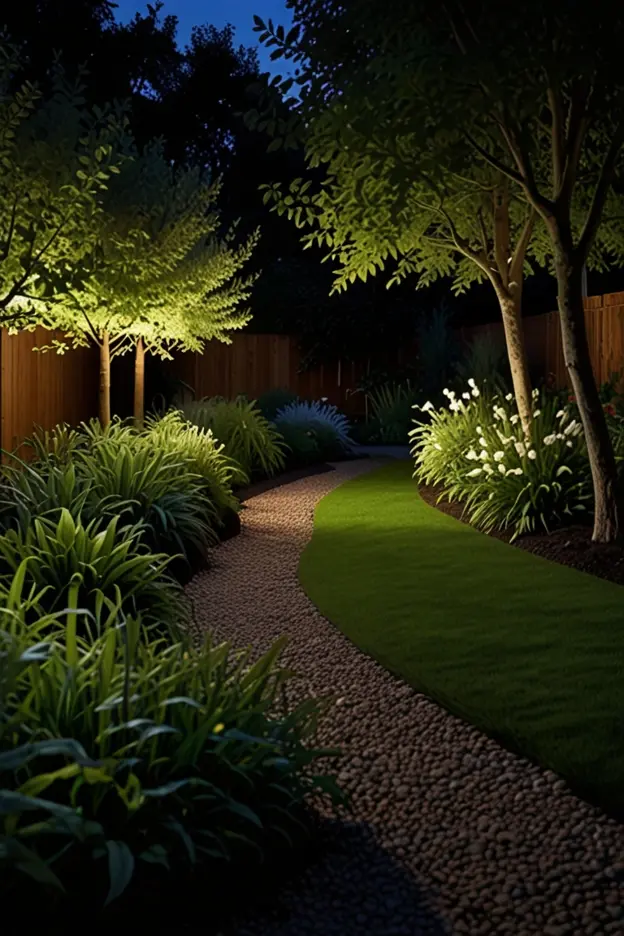
Select shade-tolerant plants with light-colored flowers, silver or white foliage, or evening fragrance that shine in twilight hours.
White-flowering hostas, astilbes, and nicotiana all glow at dusk.
Add subtle solar or low-voltage pathway lighting to highlight key plants and ensure safe passage.
Position mirrors strategically to amplify limited light.
Include comfortable seating where you can enjoy this garden during evening hours after work.
Conclusion
Embrace your shade garden as an opportunity, not a limitation.
With these design ideas, you’ll create a cool retreat that showcases the subtle beauty and remarkable diversity of shade-loving plants.


